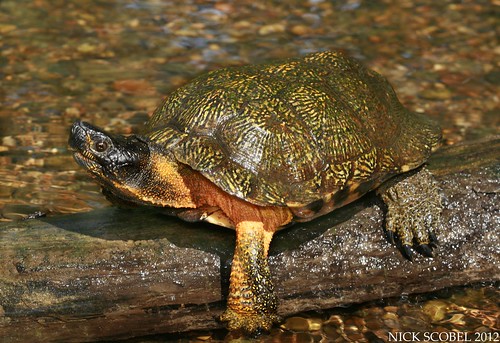Wood Turtle - Glyptemys insculpta
Wood turtles are a striking species, especially when an individual displays as much yellow on the carapace as this big guy. This particular male is one I've seen before, the last time being in November of 2010. He's one of two males in this stretch of the river that are considerably older and larger than the others, and he seems to patrol up and down at least a 400-500 yards of the river corridor.
Same male in Nobember 2010
After radio tracking this species for the past two summers in New Jersey, I've been able to gain a much better understanding of movement patterns and home ranges between males and females. Females seem to wander far greater distances from the stream corridor than males do, especially during nesting season. They also typically spend much of their summer away from the stream in woodlands, pastures, and fields where they forage on mushrooms, slugs, worms, and berries. Males do wander out of the river, but they never seem to move far away from the river itself, usually remaining within one hundred yards of the river itself. However, they move far distances up and down the corridor where they search for mates or other competing males. It's interesting seeing these patterns, even without telemetry. When I saw this male in 2010, he was at least 300 yards further upstream than he was when I found him on this particular afternoon. It was nice to see a familiar face and wish this big fella all the best in the coming winter months.



No comments:
Post a Comment